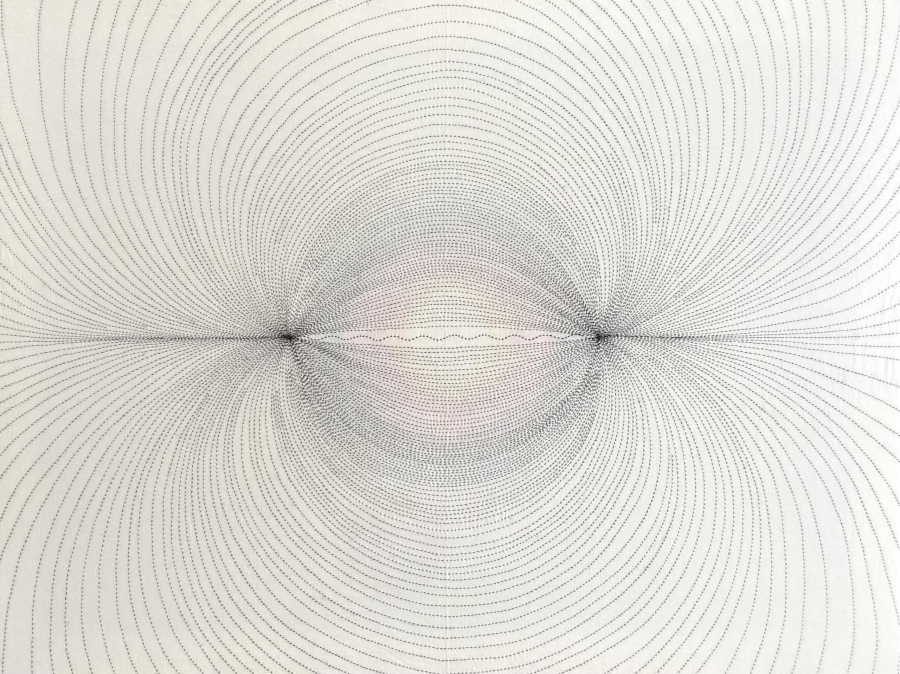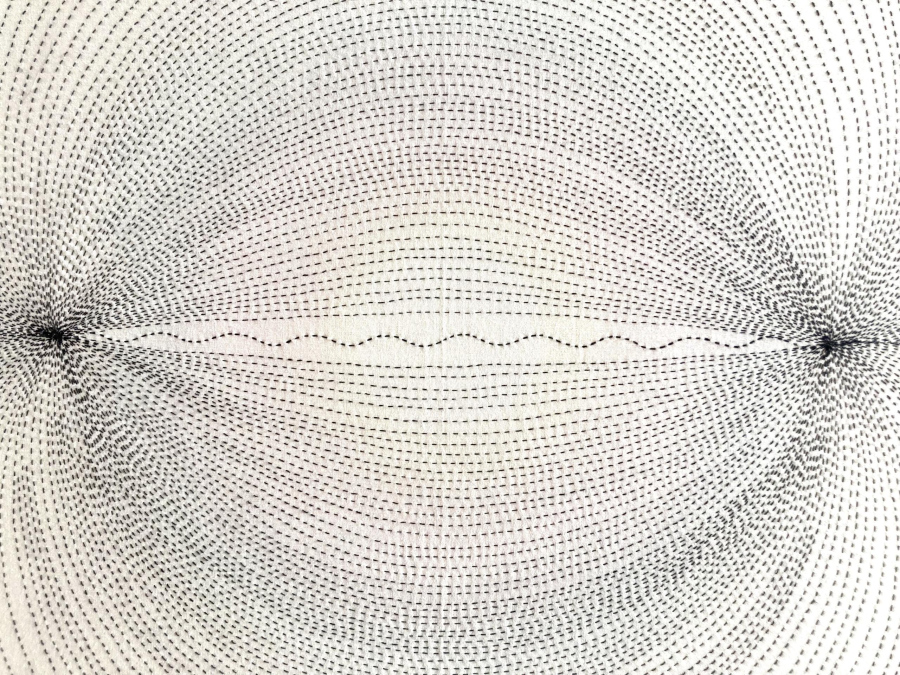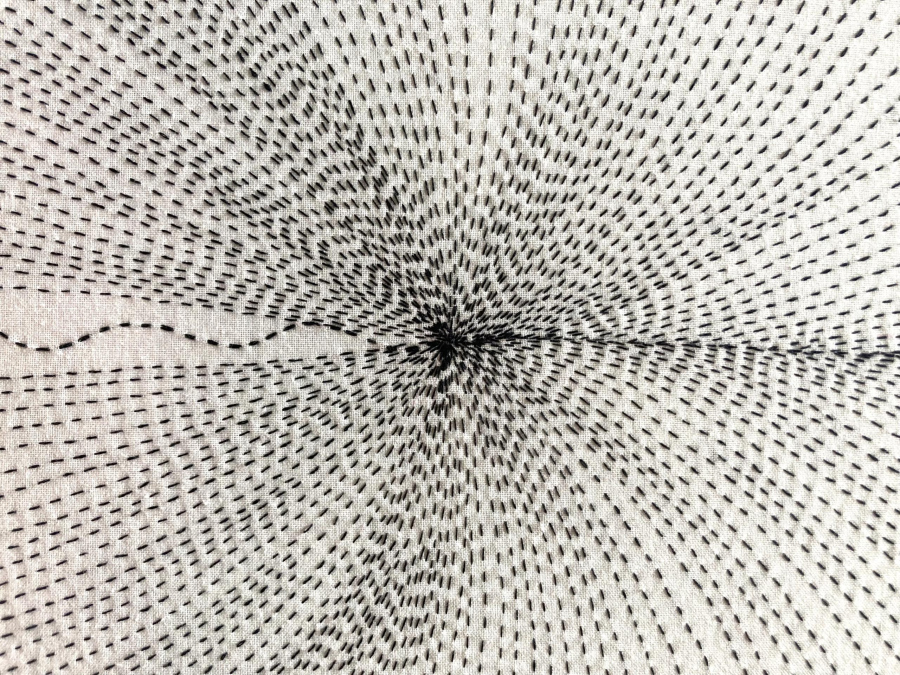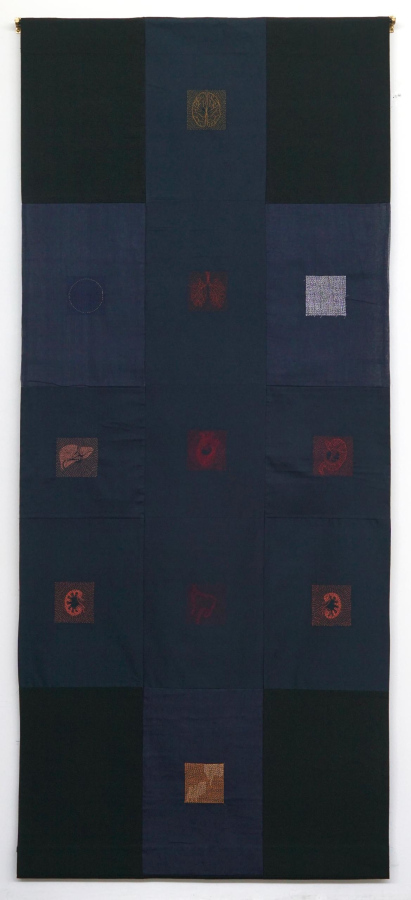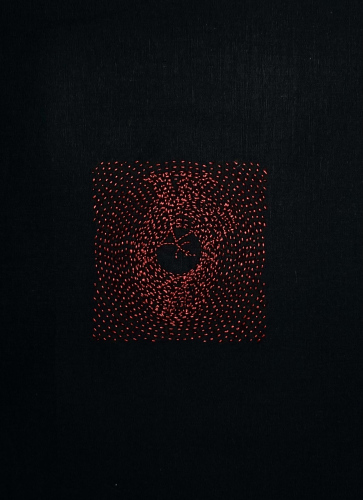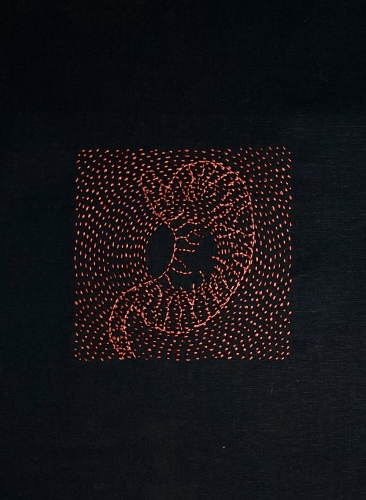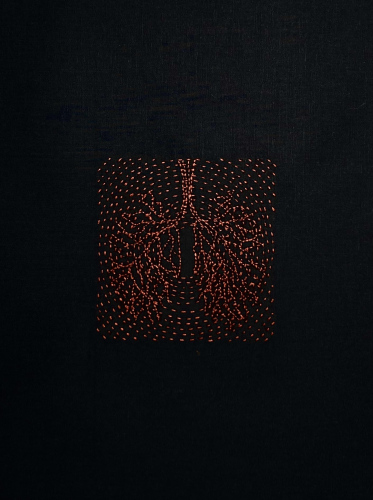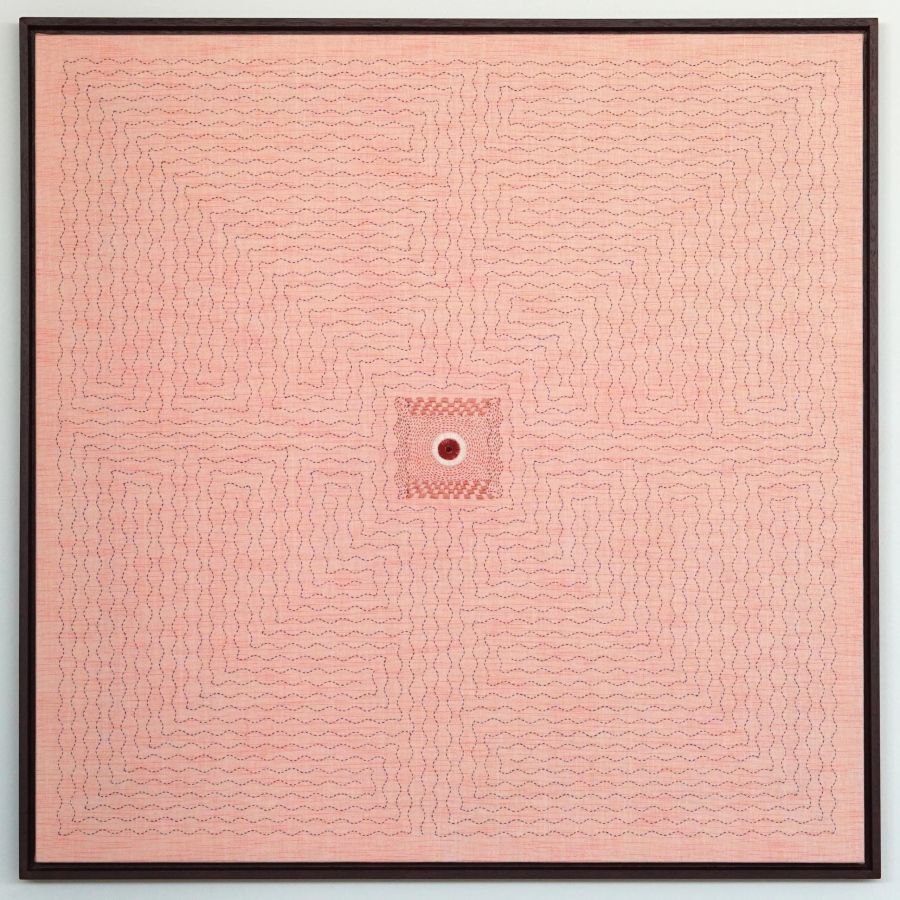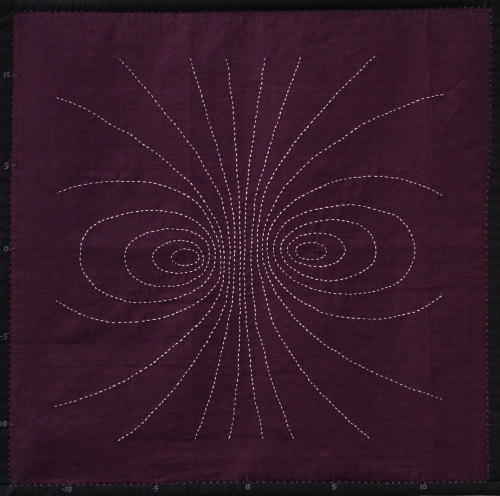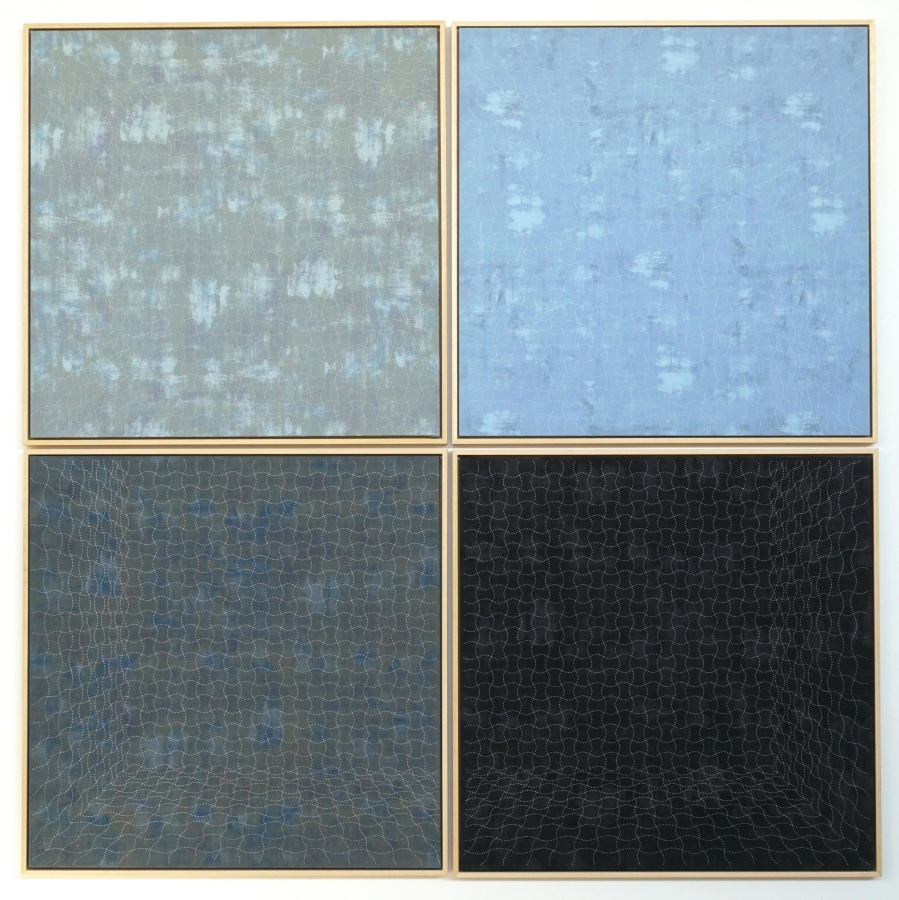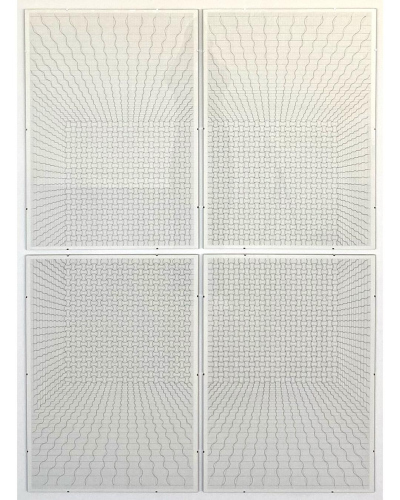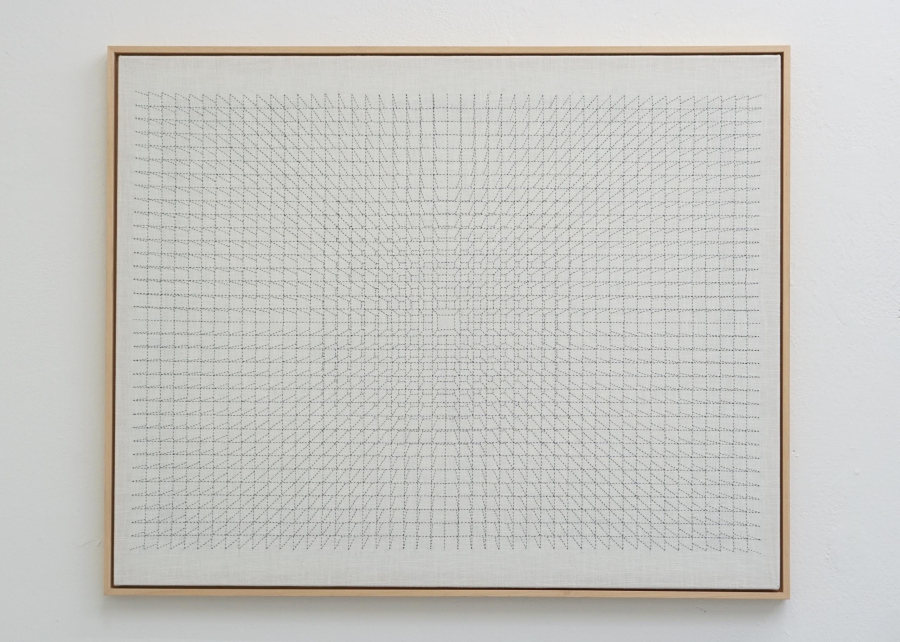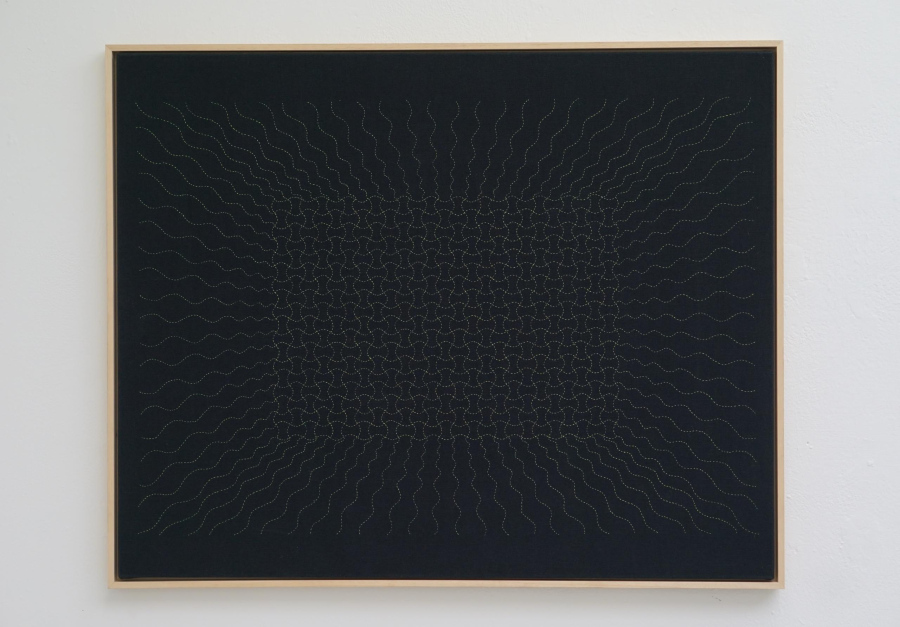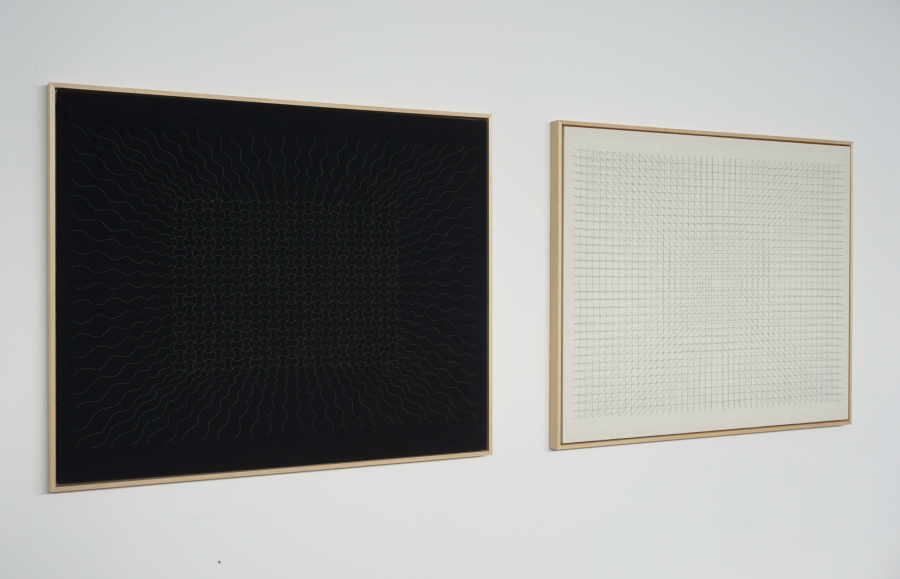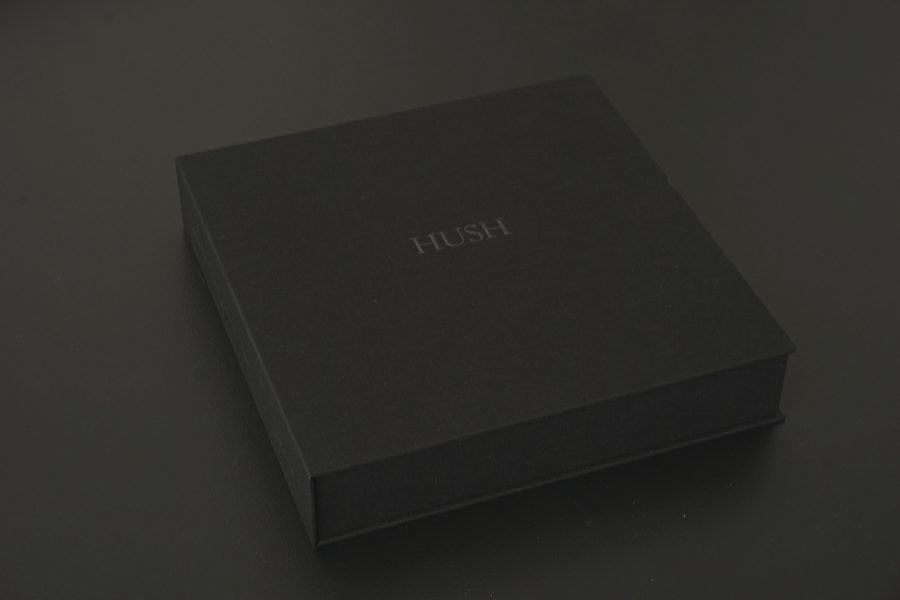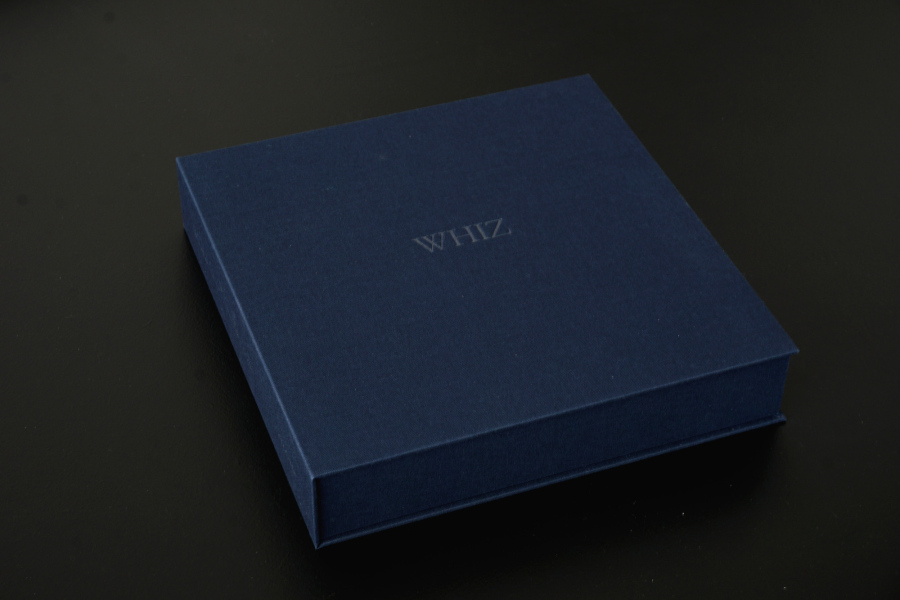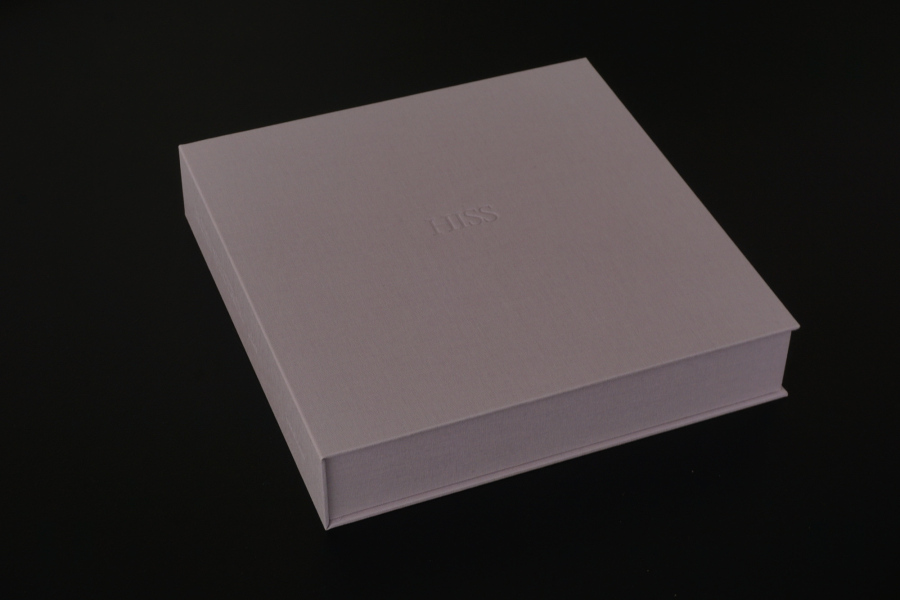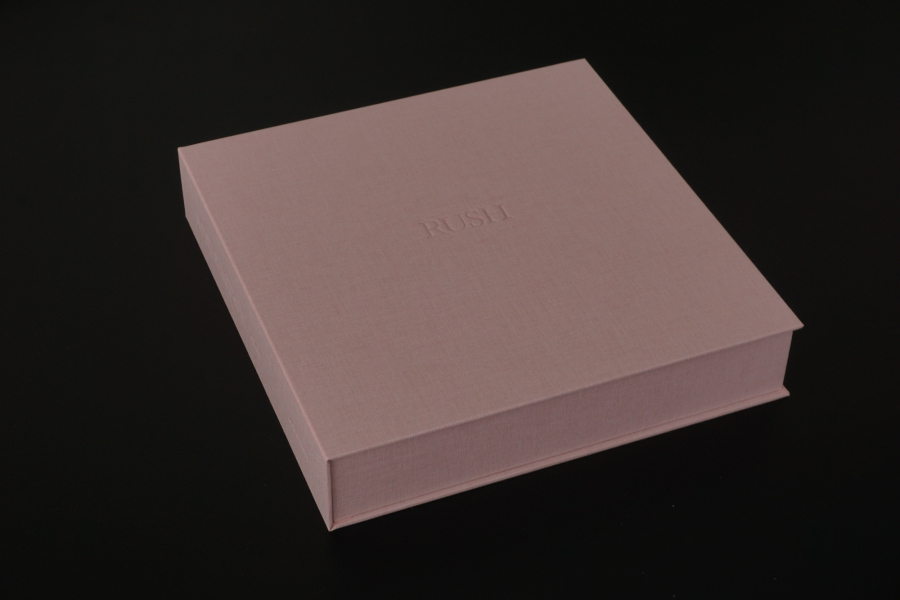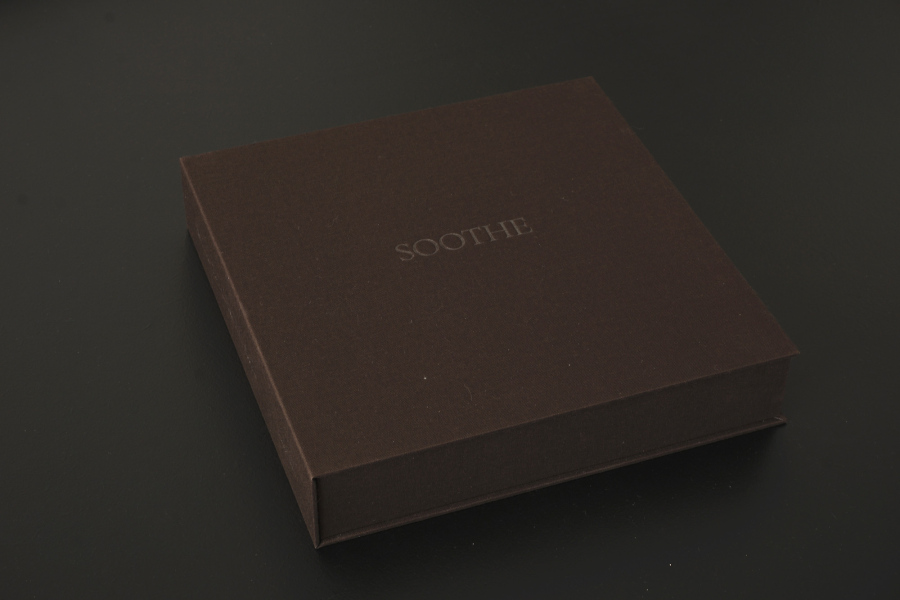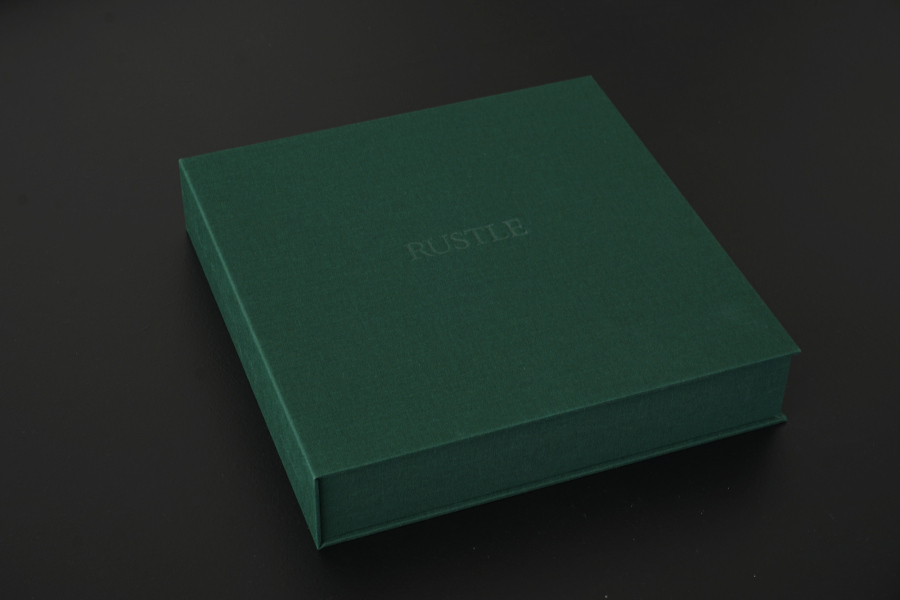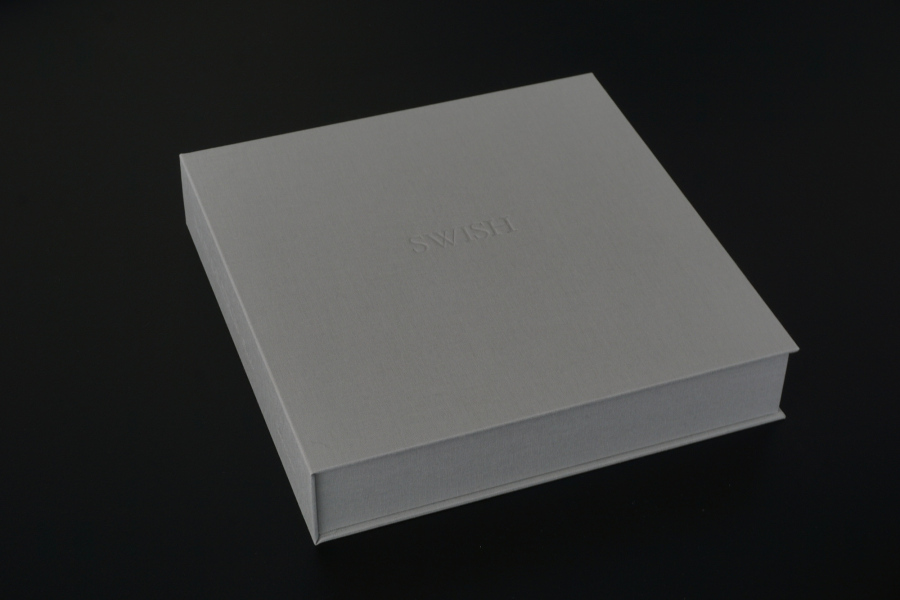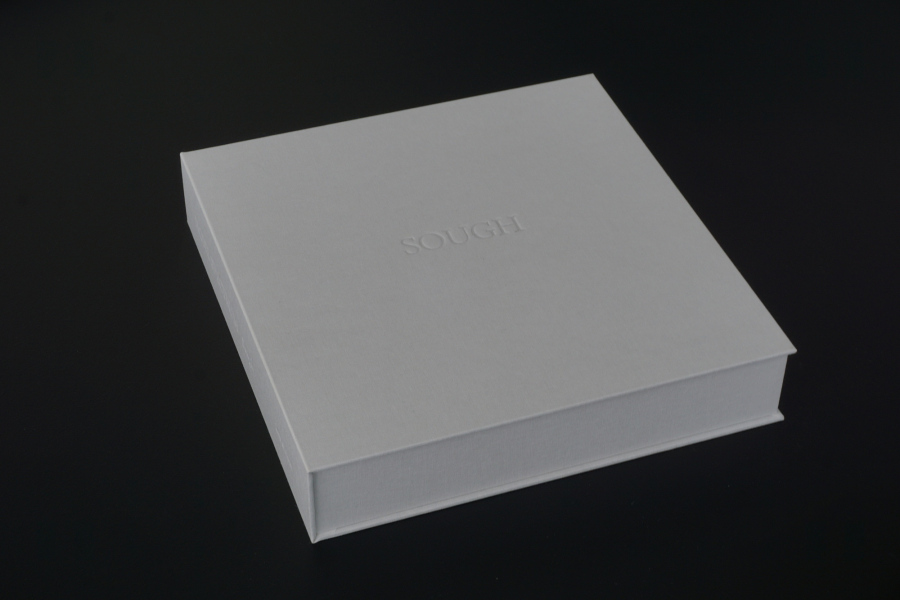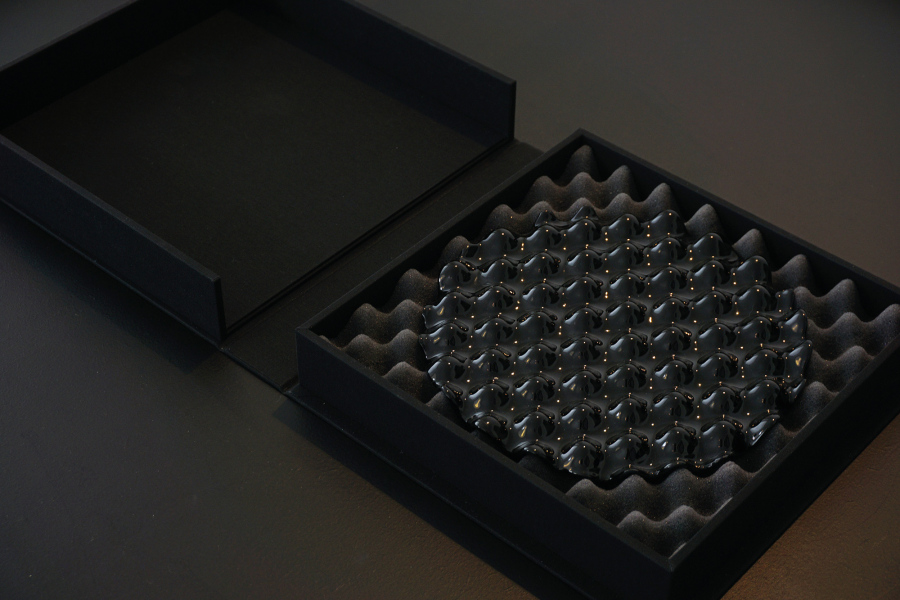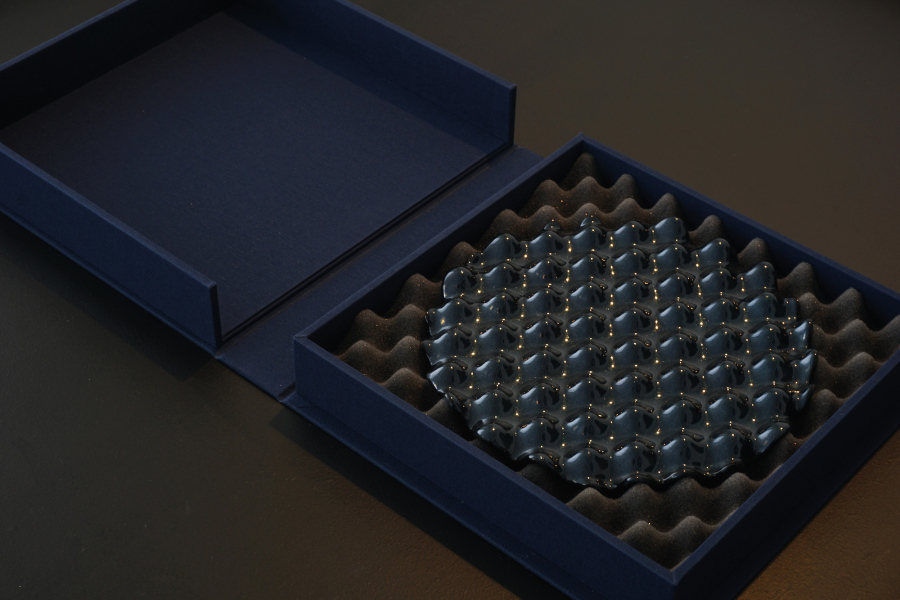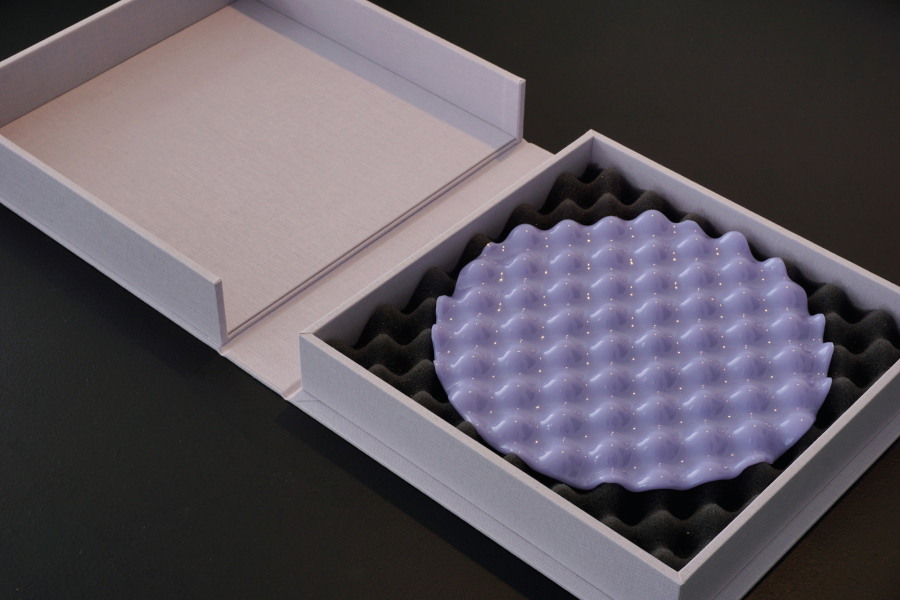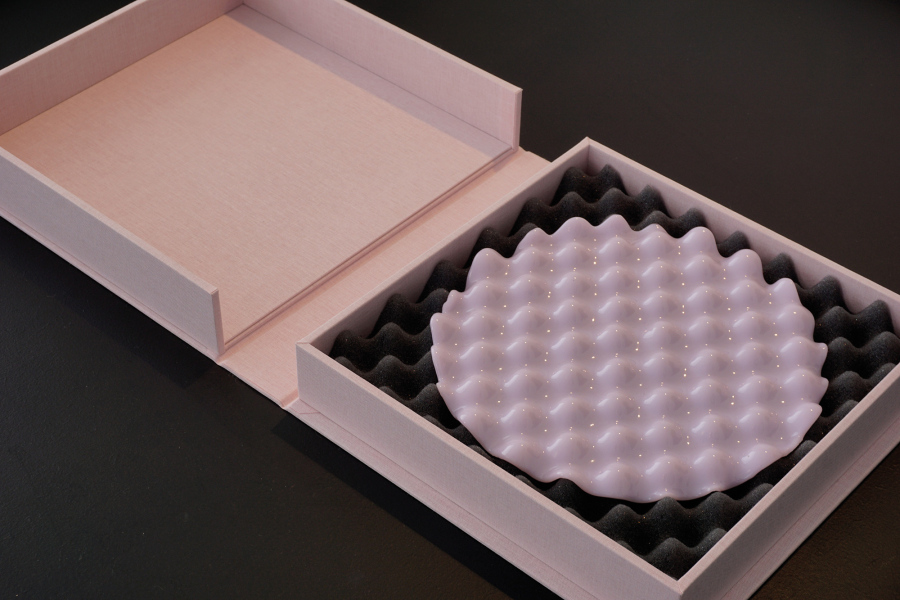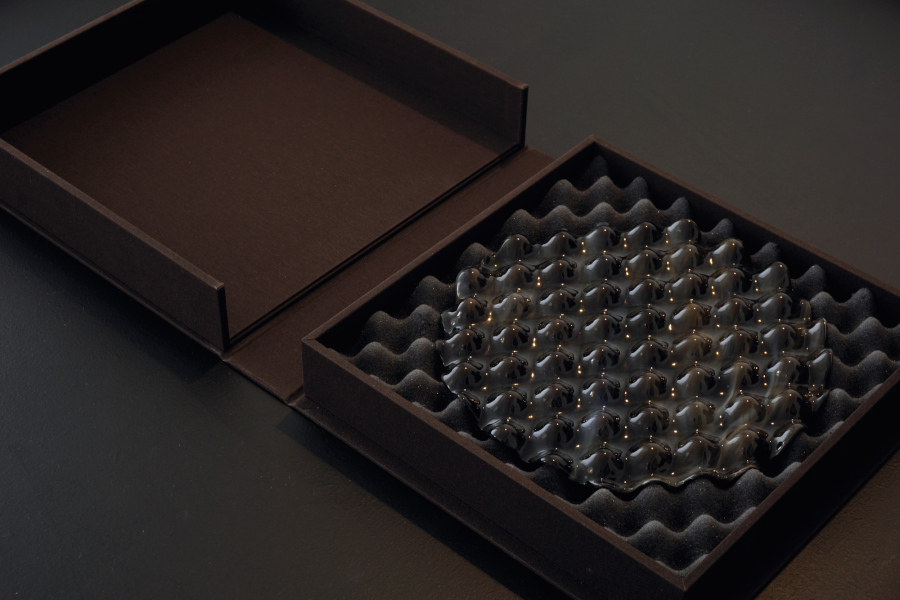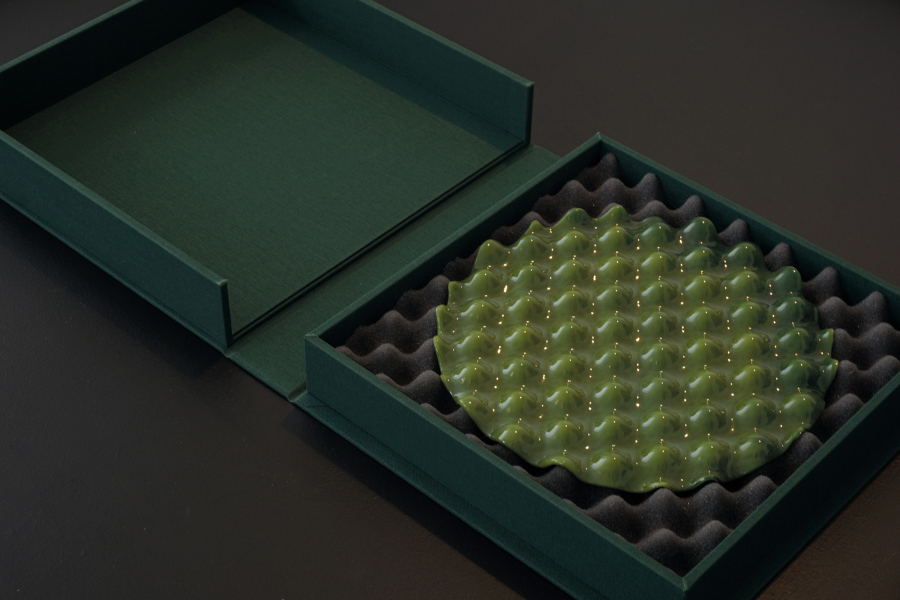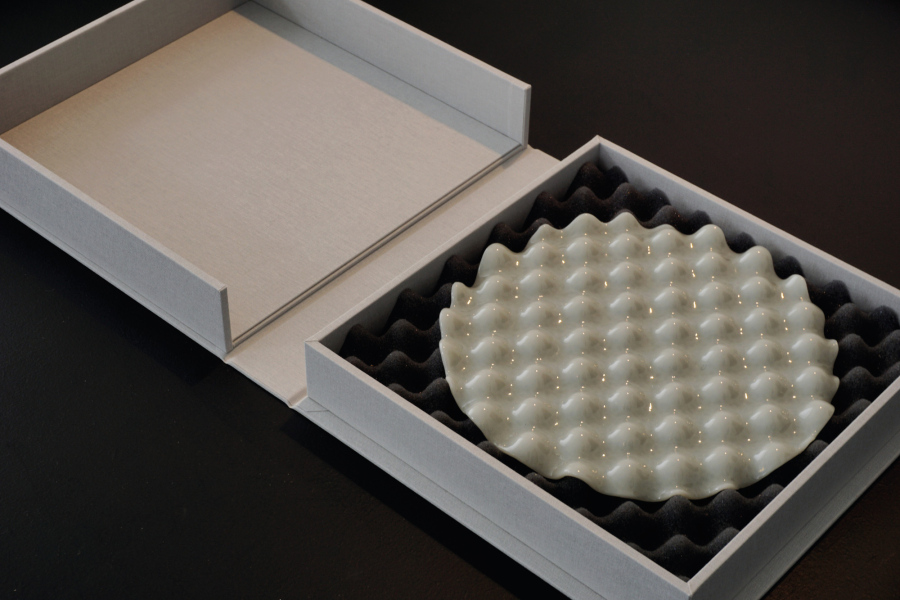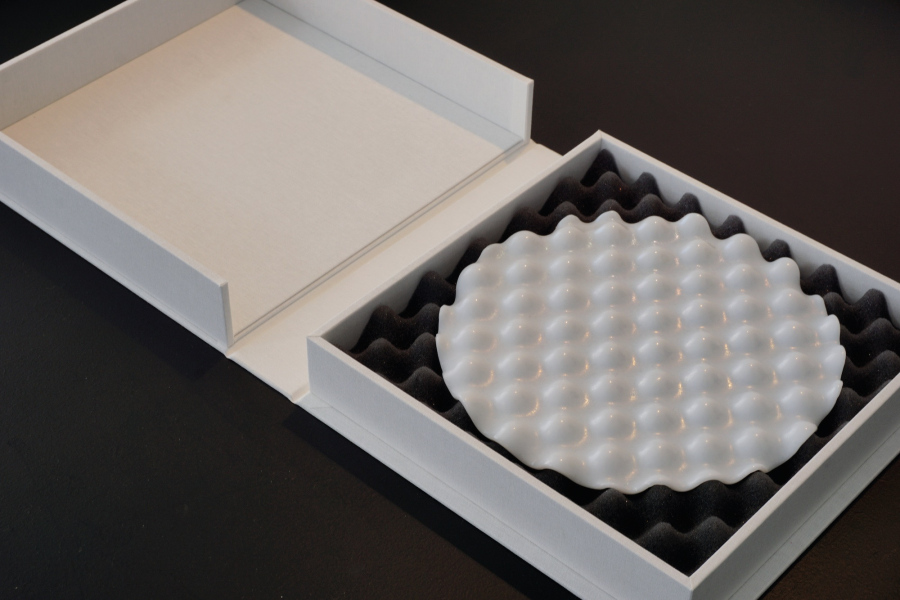Embroidery and marker on cotton, 2025, 90x120cm
Nothing is Seperate Embroidery on cotton, 2025, 80x185 cm
The Eye says I Embroidery on cotton, 2025, 90x90 cm
Sonic Perspective (Chord)
Embroidery on cotton, 2024, 160x160 cm
Sonic Perspective Fineliner and print on paper, 2023, 100x140 cm
Anechoic Chamber Embroidery on coton, 2024, 80 x 100 cm
Echo chamber Embroidery on coton, 2024, 80 x 100 cm
Noise Spectrum -
Hiss (violet) / Hush (black) / Rush (pink) / Rustle (green) / Soothe (brown) / Sough (white) / Swish (grey) / Whiz (blue)
Glass, acoustic foam,
Presented in a handmade boxes made by Bas Lafleur, 2022
Noise Spectrum is a series of glass works that originates from a long-lasting interest in sound.The series is inspired by the noise spectrum; a range of eight different sound signals, named as colours, that correspond to a particular frequency, which the listener couples with specific material associations and states of mind. This sense of colour for noise signals is similar to the concept of timbre in music.
Noise-cancelling foam is used to mold pieces of glass in a rippled pattern, resembling sound waves. The reflective surface of the glass gives the pieces an even more liquid, transformative appearance. The collection of glass works is presented in foam-lined boxes, as jewels meant to amplify the beauty of noise.
With the kind support of Stichting Niemeijer Fonds and Jump! Talenthub.
